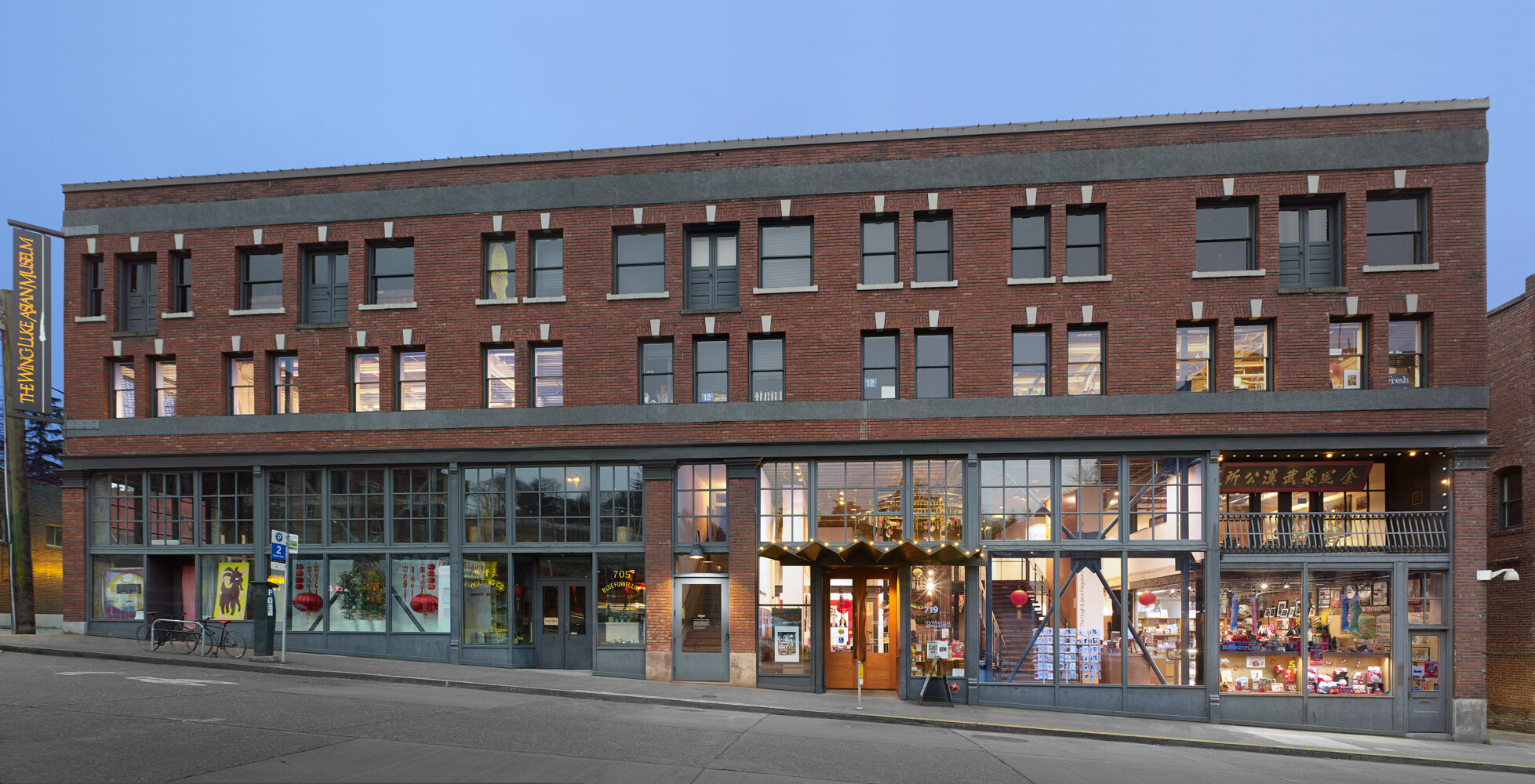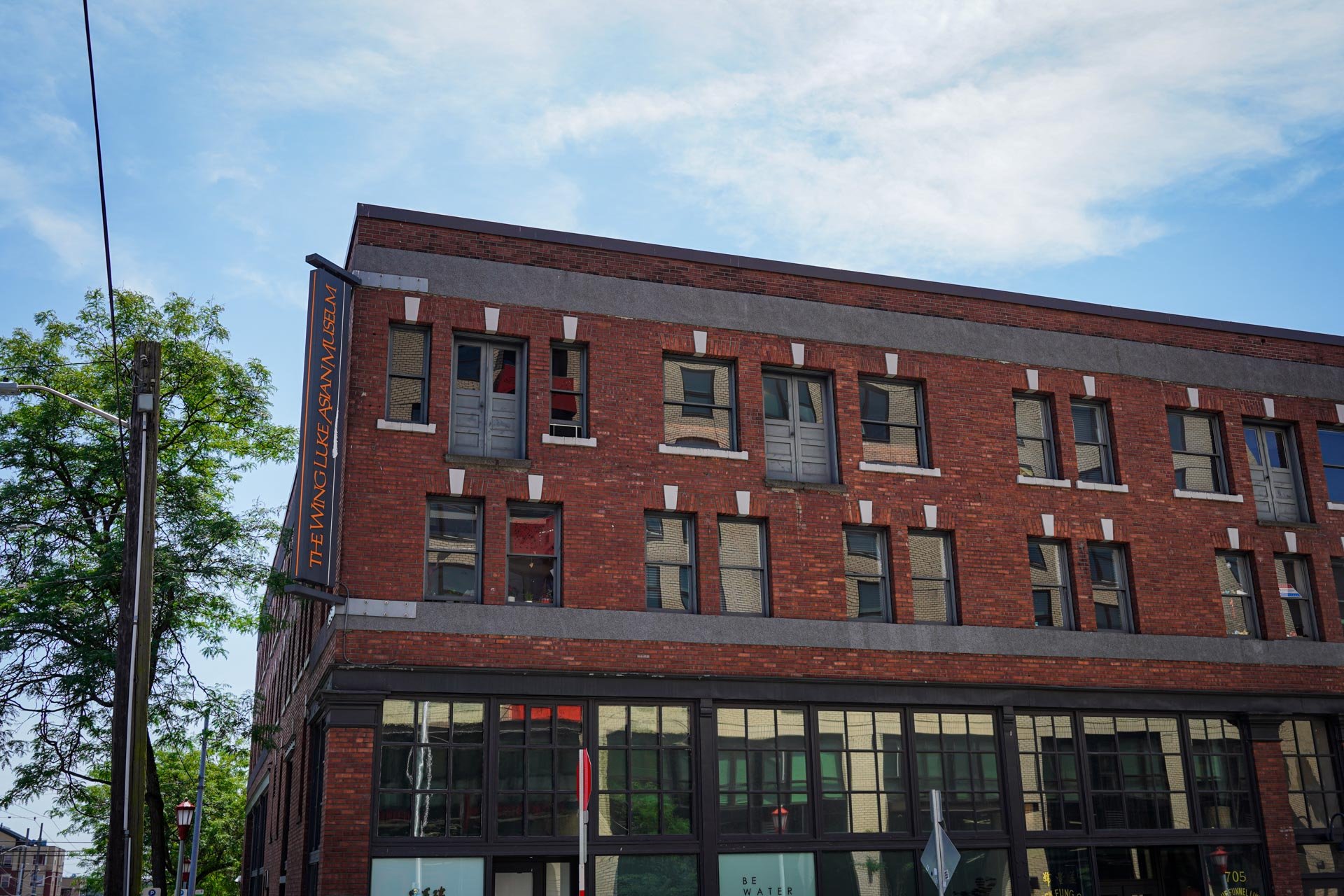FINDING COMMUNITY WITH MILLY PIL

“I just see the museum as that home base, that home for me to continue growing and to continue giving back to this Community that has welcomed me so much. I feel like it's because I've been working there, that I've been able to be educated on that and find my place and my home and my people—so I want to do what I can to tend to those people, and I already know that they're going to look out for me, too.”
- Milly (Milllionaire) Thach Pil
If you’ve ever visited or volunteered with the Wing Luke Museum in the past two years, there’s a good chance you’ve been warmly greeted by Milly (pronouns: she/her and he/him), our Volunteer Coordinator!
Milly moved to Washington from Pennsylvania in 2021; however, her story with Seattle goes much farther back. A second-generation Khmer (Cambodian) American, Milly was born in Seattle, but when she was less than six months old, her family took the train and moved to Harrisburg, Pennsylvania.

“Harrisburg is one of those places that, depending on where you’re at, is such a different experience. We lived on the east side of Harrisburg, where there were more Southeast Asian refugees and immigrants. There were more black and brown folks at the school I went to. But then if you went across the bridge to the west side of that city, there were super rich schools, super white, affluent spaces that were just so far apart of my lived experience growing up. It was such an interesting dichotomy. It was super easy to access Asian food growing up, going to Vietnamese markets and stuff. But then, what we did for fun was go to the Pennsylvania Farm show and eating fried cheese cubes and milkshakes. The dissonance is real."
Wing Luke Museum Staff
Milly then went on to the University of Pennsylvania, majoring in Urban Studies and double minoring in Fine Arts and Asian American studies. Despite living in Philadelphia, a city with a large Cambodian presence, he was one of three or four Cambodian students in his class; his solace thus came from off-campus organizations like Cambodian American Girls Empowering (CAGE), a nonprofit dedicated to preserving and educating Cambodian arts and culture to all genders. When Milly moved out to Seattle, he was cautiously hopeful that he could find similar community.
Yet, while visiting the Wing Luke Museum for a job interview, Milly was unexpectedly moved by the Where Beauty Lies exhibition. The exhibition included stories of Khmer and Vietnamese nail technicians and the intersection of beauty standards and Asian American, Native Hawaiian, and Pacific Islander (AANHPI) queer identity.
“In terms of institutional spaces and museum spaces, I never, never have seen my Cambodian self in a museum, unless it’s literally museums in Cambodia that have to do with the genocide. When it comes to Cambodian Americans, there’s a perception from people outside the community where all they really know is about the genocide. All they really know is about that suffering. And that might not necessarily be a bad thing, but the museum offers this opportunity for people to learn and to know [what] this ever-changing community looks like. “
“And that’s really the challenge…we don’t just have one narrative, and we don’t try to say that this is one perspective that everyone shares—we know that there are many different perspectives. And how can we dedicate ourselves to doing the work of showcasing so many different perspectives and experiences without saying that one of them is one truth?”
Milly leading volunteers at Hai! Japantown
The Museum Services team on a team building outing
Shortly after being hired as a Museum Services Lead — our Museum’s ”eyes and ears” — Milly “fell in love with the museum surprisingly quickly”. She witnessed so many guests feeling moved by the museum — whether in anger, sadness, joy, or hope. She regularly hears first-time visitors bemoan that they “didn’t have enough time” and tour attendees rave about the Education Guides and proposals for future exhibitions.
Now, as the Museum’s Volunteer Coordinator, Milly interfaces with folks who give time as volunteers, whether they’re seasoned aunties or fresh-faced high schoolers. Most recently, that’s looked like the Sound Check! music exhibition opening, JamFest, and Hai! Japantown. For her, working with these familiar faces who give generously in the ways they can “is an honor” for her, a chance to experience both the power and sweetness of community.
Milly and Museum Executive Director, Joël Tan
“There’s only so much capacity we have. When we increase the amount of people we have, we increase that capacity, we increase that support, and it makes us all get to be a part of it. And so, when I see the familiar faces that do show up, that’s just so meaningful to me because that’s where I get that feeling again, of ‘belonging.’ Where I’m seeing people I know come in and again and again and existing and just caring for each other and eating good food, I could live on that forever.”
We remain dedicated to making the Wing Luke Museum a home for so many communities and people just like Milly. Our presence, which now includes our beloved Eng family homestead, carries on because, as Milly puts it, “there’s somebody that knows we are here and is willing to dedicate spaces and resources to making sure the world knows that.”
As we look to 2024, we are deeply excited to grow abundantly in our commitment to Seattle as placekeepers, to our histories and our futures as stewards, and to each other in care—but it is critical we do this together. Whether that's donating to ensure our presence with a year-end gift, or working alongside us as a volunteer, your contributions matter.
We thank you for the ways that you’ve held us thus far and look forward to holding others in care for future generations.
Please note our mailing address has changed:
PO Box 3025
Seattle, WA 98114
To make a donation via stock or securities contact our Development Team





